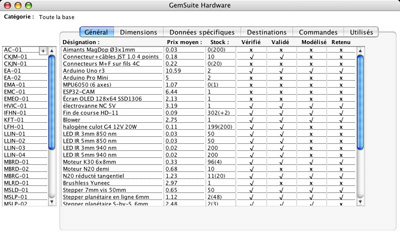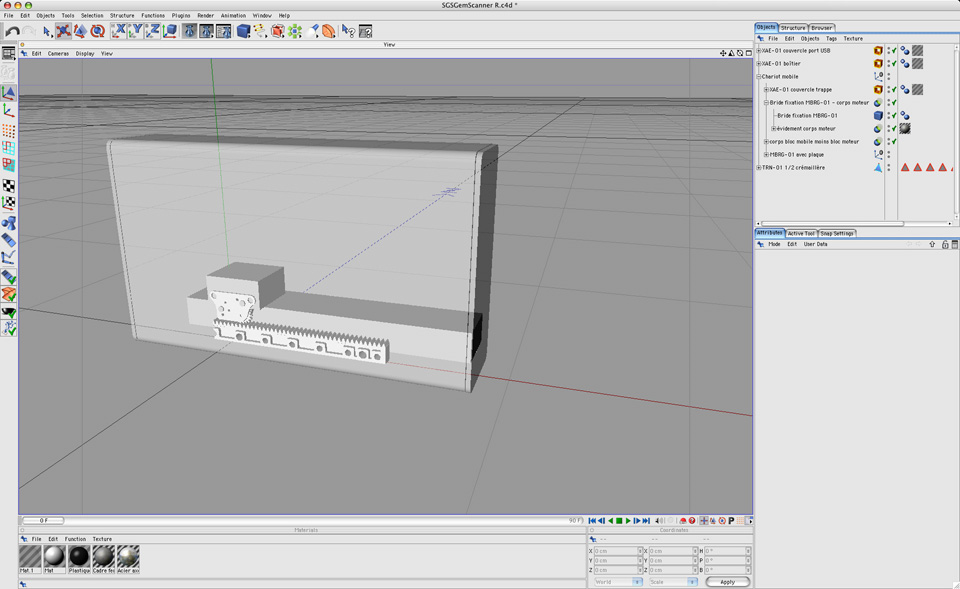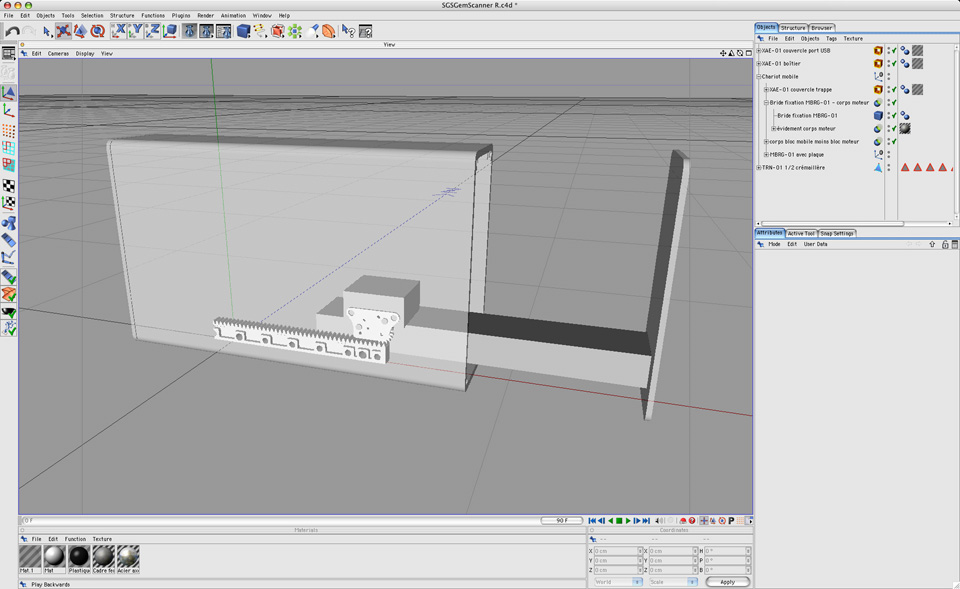September 6th, 2020 - Gem scanner pre-prototyping : 3D model
Now that I have the Parts Breakdown System done (mostly) and populated with all the hardware parts I have settled on so far (and stocked), I can resume working on the gem scanner plans.

I need a proper working prototype (not a Q&D pistacchio scanning contraption) to continue implementing the software parts of GemSuite, because what use is an anisotropic Modeler if I don't have a decent input device for the different axis colors anyway? While it will not be able to scan biaxial minerals completely, the "Recuts" scanner will still provide the ability to scan uniaxials like Tourmaline or Beryl and enable extraction of the A/B and C axis colors and color densities - mandatory for the beamtracer. I think this portable/affordable scanner will be the best solution for most of you cutters/recutters out there. Sure you won't be able to scan doorknobs, but as long as your rough is under 25mm maximum dimension, you'll be good to go. And no matter what they say, one inch is HUGE. ;D
So I went through four different iterations of the "recuts" portable gem scanner 2D preliminary model, and settled on this last version that uses the feedback I got from you guys about recutting gemstones (mostly keeping the initial table plane). So I scratched the integrated re-aligning feature, which was probably not a good idea anyway (I wouldn't use CA glue or dopping wax in the scanner!). There will be plans for a DIY re-dopping gimball/jig, and I'm also working out the preliminary model of an automated one (which will be super fast and convenient to re-align a piece of rough, no eye-killing dials whatsoever). Since that one won't be portable/rugged enough to take a hard ride, it will be a stationary extension to the gem scanners that will remain in the workshop. I'll try to make it pretty as well.

Now that the PBS is done and the 2D model advanced enough so that I know where I'm headed, I resumed modelling the different hardware components, and started putting it all together to model the few parts that will be fabricated/milled/turned from stock material.� Here's the current state of the "recuts" gem scanner 3D model as of tonight : the outer dimensions are 124 mm long, by 75 mm wide, by 30mm deep, or two external laptop hard drives stacked together. This is the smallest I can get for a portable gem scanner unit without sacrificing the maximum rough size that it can accomodate (again, 25mm).

The scanner will open sideways to insert the gem to be scanned, using a dedicated dop (not in this 3D model yet). The opening will be 50mm+, which is enough for even the big-pawed bears among you to fit ;p

Next step is figuring out how to program the $5 ESP32-CAM module, because the Arducam module I used for my pre-prototype is ten times that price ($50!). There's just no way I can make this a really affordable unit if I don't get the best bang for the buck as far as components go.
Tom, a.k.a. Ludwig Von Sodabowski